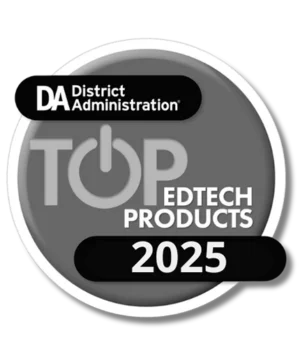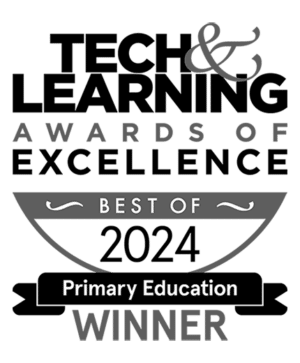
Featured Resource
Why Over Half of California School Districts Trust SchoolStatus
Read More >Join Mission: Attendance to reduce chronic absenteeism in 2025-26! >> Learn How <<





“I thought we were going to have 115% attendance when we came back after the pandemic. And it was actually the opposite.”
This candid observation from Jessica Bull, Executive Director of Communication at Roseville City School District, captures what districts nationwide discovered as schools reopened: attendance challenges weren’t going away—they were intensifying.
The data confirms this reality. Chronic absenteeism rates still hover at 26% in the 2022-23 school year, nearly double pre-pandemic levels. This means one in four students is missing enough school to significantly impact their academic future.
Despite universal concern about this issue, our 2024 Educator Report uncovered a troubling disconnect: while 77% of educators consider school-home communication “critical” for improving outcomes, only 25% find it “very easy” to connect with families.
This gap between intention and implementation helps explain why attendance problems persist.
Our research with educators reveals a concerning pattern: most schools address attendance only after it becomes a problem.
In fact, just 37% of schools regularly communicate with families about the importance of attendance, while the majority—58%—reach out only after absences accumulate. This reactive approach misses crucial opportunities for prevention. Further complicating matters, educators often struggle to confirm whether their communications even reach families. Nearly half (43%) report uncertainty about message reception, and almost a third contend with language barriers that make meaningful engagement difficult.
Meanwhile, YouthTruth data shows only 42% of students feel connected to their school community, creating a perfect storm for attendance problems: when students don’t feel they belong, showing up becomes much less important to them.
Districts that have successfully reversed attendance trends share three common strategies:
Roseville City USD transformed their paper-based processes into a digital system providing immediate visibility into attendance patterns. “We had no way to quickly see who hasn’t been at school,” explained Attendance Supervisor Kim Peterson. “Now we can identify who those students are, who are the outliers, who are the groups that are right on that edge.”
Results: Chronic absenteeism dropped from 18% to 10% in two years.
Grand Prairie ISD eliminated their “time-consuming and cumbersome” manual processes by implementing automated but personalized communication systems.
Results: 32% “save rate” for students at risk of chronic absenteeism and 23% improvement in conference effectiveness.
Prince William County Public Schools addressed communication barriers with diverse families through automated translation features and multiple communication channels.
Results: 97% of teachers feel better equipped to meet student needs, and 75% of students who received one attendance letter showed immediate improvement.
A 2023 study found that schools with strong family engagement before the pandemic experienced significantly better outcomes after, including:
While the national chronic absence rate improved by just 8.54% from 2021-22 to 2022-23, districts using integrated data and communication solutions saw improvements of 22.23%.
Districts looking to improve attendance and family engagement should focus on:
These aren’t just theories—they’re practical approaches that real districts have used to turn around concerning attendance trends. Leaders considering technology to support attendance efforts could look to tools that solve actual day-to-day challenges, and systems that provide real-time visibility so no one is working with last month’s data. Consider whether the product integrates communication capabilities
Lastly, pay attention to whether the solution can help identify emerging attendance issues before they become chronic problems, as early awareness is often the key to successful intervention.
Selecting the right technology helps districts improve attendance while saving time and resources. Key features to look for include:
The data is clear: improving attendance isn’t just about tracking absences—it’s about strengthening family connections and identifying challenges early. Districts that take a proactive, data-driven approach are seeing measurable improvements, from lower absenteeism rates to better academic outcomes.
Addressing attendance challenges doesn’t require starting from scratch. Proven strategies—real-time data, consistent outreach, and accessible communication—are already working in schools nationwide. The key is taking that first step.
To help your district move forward, we’ve developed several practical resources:
These tools can help you assess where you are today—and take meaningful action to improve student outcomes as soon as tomorrow.
 Dr. Kara Stern
Dr. Kara SternDirector, Education and Engagement
Dr. Kara Stern began her career as an ELA teacher, then shifted into administration as a middle school principal. Dr. Stern is a fervent advocate for equitable communication and family engagement. She spent five years as Executive Director at Math for America, where she designed the professional learning community that exists to this day. An unexpected move to Tel Aviv launched her into the world of EdTech where she became the Director of Education Content for Smore and then the Head of Content at SchoolStatus. Outside of work, she indulges her love for reading, devouring two novels weekly, with a particular fondness for heists and spy stories.
News, articles, and tips for meeting your district’s goals—delivered to your inbox.















Ready to learn more about our suite of solutions?
